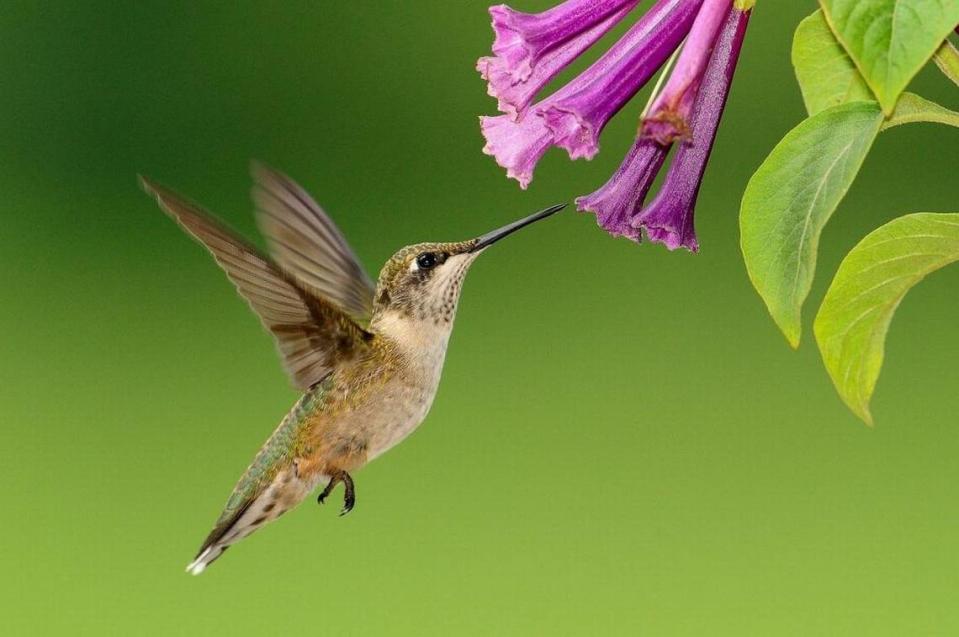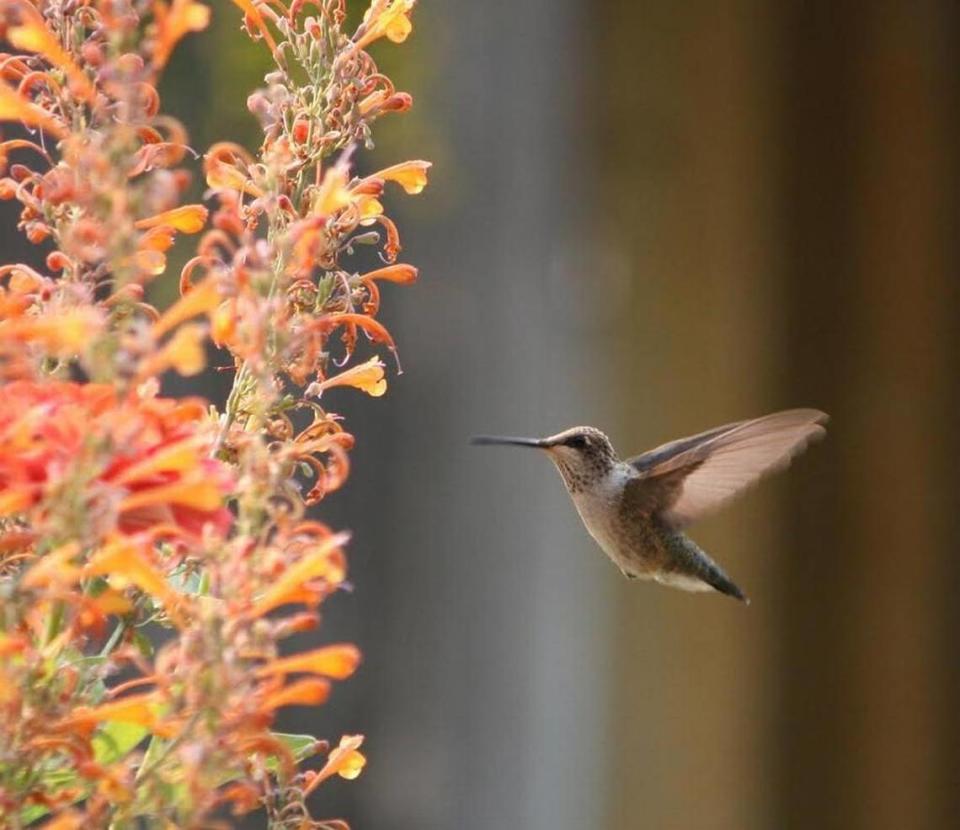Hummingbirds returning to WA with spring. Here’s how to safely feed world’s smallest bird
With spring coming into full swing, birds will be migrating to Washington state, occupying residents’ bird feeders. One bird in particular to keep an eye out for is the hummingbird.
Hummingbirds are the smallest migrating bird, according to the Seattle Audubon Center. While in flight, their wings flutter up to 80 times a second in a figure-eight motion and up to 30 mph, according to the Hummingbird Guide website. They’re also the only birds that move backwards and sideways, according to the National Audubon Society.
To achieve their incredibly fast and complex flight patterns, a hummingbird’s body has adapted to withstand high blood sugar levels that would be hazardous to humans. They must feed almost constantly.
“I’ve heard they need to eat as often as every 15 minutes,” said Suzanne Harkness, development and community engagement manager at Tahoma Audubon Center in Lakewood, in an interview. The center aims to promote wildlife conservation and protection through education.

If you’re interested in befriending some birds this spring, Harkness and other online research centers explain what you should know about hummingbirds, including how their bodies work and ways to properly feed them.
Hummingbird behavior
To some people’s surprise, the tiny avian creatures only inhabit North, Central and South America, Harkness says.
Across the Americas, there are over 300 species of hummingbirds, according to the American Bird Conservatory. But Washington state only sees a few of them.
Four species of hummingbirds regularly travel through the Evergreen State: the rufous, Anna’s, black-chinned and calliope hummingbirds. However, residents in the Puget Sound region will only get to see the Anna’s and rufous varieties.
Harkness says that in the last 50 years, the Anna’s hummingbird stopped migrating, so it’s now a permanent, year-round resident of Washington state. Rufous birds on the other hand migrate to Washington from Mexico during spring and summer for breeding. Male hummingbirds are polygamous, meaning they mate with several females and leave the parenting duties to the moms.

The birds, in general, are very territorial and have bold temperaments. Males in particular will stand their ground (or air) when it comes to guarding their territory or food supply.
“They’re really not shy,” Harkness says. “I myself have been buzzed by them when going to refill the feeder ... like they’ve buzzed my head,”

 Yahoo Autos
Yahoo Autos 